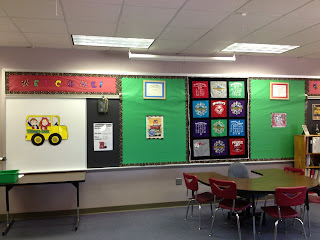Redesigning Classrooms
In Papua New Guinea in our
class, the desks and sitting arrangements were regularly arranged and
rearranged. Also, the front and back areas of the class were always empty
spaces. They were used for various learning activities. Sometimes they were a
lab, or a library. Often educational exhibitions, projects, and hands on
learning happened out there. A classroom needs to be very innovative in design,
and colourful, which has adjustments for students with disabilities.
If a student unexpectedly
fell ill, she/ he could rest at the back of the class on bedding in our Papua
New Guinea school, and students were requested to talk softly so that she/ he
could sleep. That helped the child recuperate instead of having to walk to
another place in school for much needed immediate rest.
A section of one of our
classrooms was segregated by moveable wooden mini walls for some quiet time.
Students who needed to read for longer, or required a quiet environment to
refresh their minds used that space. An area like this may be used for yoga and
meditation.
The floor in our Papua New
Guinea class was clean and carpeted. We often had classes sitting cross-legged
on it. In India, much of spirituality learning is done in the same manner, but
we often shy away from encouraging that in schools. We were nearer to the
teacher when we sat around her on the carpet. Each day began and ended like
this. We started off the day with class discussions, and ended with a story
session.
When back in India, I learned
that in vernacular schools and educational institutes for poor/ middle class
kids, children sat together cramped in row benches. In convent schools,
separate desks was the norm. The teacher had a larger desk, and at times a
podium. I came across the term ‘classroom redesigning’, where I read reasons as
to why some teachers are deciding not to have a big desk, so that students can
get more space.
There are spaces at high end
commercial places which may not reopen too soon. We need bigger classrooms with
fewer kids which is difficult in a country with a huge population like ours.
These places which will start functioning later may lend or rent them at
affordable rates to schools so that students of Class X and XII can study with
greater social distancing. I advise this only when it’ll be much safer for students
to go to a class and study.
Till we control our
population, maybe schools will need to shoot up higher to have larger
classrooms, with more space for every child. I think our government needs to
spend money on giving learners more physical space.
I remember how when in Class
3, a teacher who was taking an exam on teaching, made the class layout like one
in Japanese schools, while teaching us on Japan in geography. She rearranged the
desks in various layouts and grouping methods regularly, so that within a
month, we got to know and befriend each and every classmate. When sitting
positions never change, you often only know the child who sits next to you
better than the rest of your classmates.
Another teacher in Class 3
had arranged for a mini library in class. In between tiring lessons we would
read story books. Each student was encouraged to contribute one book to class.
Also she converted the adjoining terrace to a wonderful garden for nature study
lessons.
#classroom,
#classroomredesign, #redesign, #redesigning, #inclusiveness, #innovation,
#creativity, #love, #support, #library, #lab, #garden, #naturestudy, #pandemic,
#Covid, #Corona, #floor, #yoga, #meditation, #Japan, #geography, #desk,
#chairs, #benches, #teacher, #student, #interiordecoration, #decoration,
#education, #schools
https://pixabay.com/photos/classroom-school-learn-student-435227/:
Image by Shannon
Anderson from Pixabay: Picture courtesy




Comments
Post a Comment